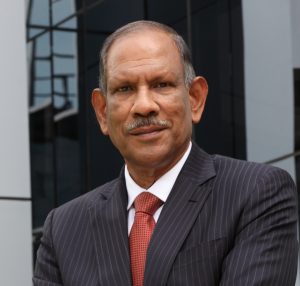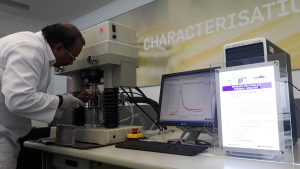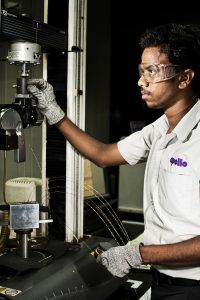Story by: Sricharan R
Future sustainability of road transportation will require substantial improvement in the efficient use of energy by vehicles. As new technologies are being deployed to reduce total vehicle energy consumption, the contribution of tyre design is playing a major role. Shaping a tyre tread is an endeavour in balance between engineering and appearance. In brief, a tyre must be ‘gripping and beautiful’. The shape cannot be just visually attractive because more importantly it must provide maximum grip and operating constancy on the road as intended in design and construction.
One of the leading tyre manufacturers in India, Apollo Tyres is setting up a new design studio at its Global R&D facility in Chennai. The new studio will help the firm to visualise using various digital platforms and bring in better solutions. Incorporated in 1972, Apollo is now the 11th biggest tyre manufacturer in the world. The company markets its products under 2 brands; Apollo and Vredestein. These products are available across the globe through a vast network of branded, exclusive and multi-product outlets. 
Apollo Tyres has manufacturing units in India, the Netherlands and Hungary. At the end of the financial year 2018, the company clocked a turnover of US$ 2.28 billion, backed by a global workforce of approximately 16,000 employees. It gets 69% of its revenues from India, 26% from Europe and 5% from other countries. The company spends almost 2.5% of its revenue on R&D and this is on par with the spending by the international companies on research and development facilities. Apollo Tyres has Global R&D facilies in Chennai and in Enschede, Netherlands.
Speaking to Auto Components India about the new design studio, P K Mohamed, Chief Advisor, R&D, Apollo Tyres, said, “ We have been upgrading our equipment on a constant basis and we spend every year for the upgradation. Our target is to make this centre on par with the international level within 5 years by upgrading various aspects. In that line, we are setting up a new design studio inside the facility where we will have the visualisation and other important aspects. We are augmenting and it will be a step by step process. With this, we will have a digital platform and we can use it in a productive way.” Adding more, he stated there will be an increase in the number of talents in the R&D centre too.
Further developments
The Chief Advisor said, there are three important aspects that are needed to be considered for the tyres: Safety, Comfort and Economy. The economy part will split into two: Mileage and Rolling resistance; while, safety is split into various aspects including braking distance, traction, cornering etc. In comfort, it will be of two major parts: Mechanical and accosting comfort. Mohamed said there needs to be maximum importance given to the component in these areas.
“These are the most important aspects for the tyre. Many say that tyre is an easy component. But the truth is, it is not. It is highly engineered and a lot of technology goes in. In order to bring in more safety, we are using specialised polymers in the particular compound. We are also using silica technology for tyres called the tandem mixing. We are the only company in India to have it and the firm has invested around 24 million euro in this technology,” he stated.
Adding more, he said “We have got a specialised division for polymer technology and also got an extended division in the Netherlands, where we have got very high experience in dealing with the safety aspect of the compound. So, with the inputs from India and the Netherlands, we make the tyres highly safe. In the comfort aspect, for the mechanical comfort, the geometry of the tyre is very important and the precision of placement is very important. In order to get it, we have invested a lot in our plant in Chennai right from mixing to curing. In order to reduce the acoustic and vibrations, our design team has used a computer-aided simulation to make the design.
On the economy part, the rolling resistance is the only thing. But, whenever we think of rolling resistance we do not want the customer to lose mileage. So, we optimise the mileage with traction and rolling resistance.”
Adding to his points Subhendra Baksi, Head, R&D PV (AMPEA), said, “On a tyre, there are around 16-18 components. It looks simple but, it is not. This is where the precision of a component comes into picture. Only around 4-6 inches of the tyre makes contact to the road and that is where the load transfer, braking etc is. It is a pure engineering product, supported by chemistry to make it happen.”
With the technology challenges being high, Mohamed said, the tyre industry is going through 4 megatrends namely, electrical, electronic, EVs and shared mobility. “From steam engine, we moved to IC engine and it was a dramatic change. In terms of speed, the tyre has to meet the speed and that was a challenge. Now, when you move from IC engine to electric engine, a few aspects need to be concentrated. Tracks, rolling resistance, noise and durability are the major challenges. All the four is going to be visible and we are well equipped in supporting that. Today, we have got 220 people working for this in Asian R&D and 180 working in our Enschede, Netherlands R&D.”
The R&D is also working on truck tyres with mileage and durability in mind. In the passenger segment, they have equal focus on rolling resistance, traction and mileage. Another important aspect Apollo tyres is working on is nanomaterials. It is working with Mahatma Gandhi University and has got a patent on the subject. It has also developed a nano-based compound .
“There are several nanomaterials like griffin etc. Out of which only a few materials are industrialised. Many are still in the research stage and some on the trial stage. It is not that easy as we should have the special material to make them work,” he said.
Indian industry
Being an Indian tyre manufacturer and present in the global market, Apollo Tyres is capable of taking steps at the design stage and bring out products according to it. The company is supplying for low to high-end vehicles in India. Recently, the firm’s winter tyre was rated number one in the European markets. For the Indian industry, it uses silica technology as the roads here are rough and more importance needs to be given to chucking.
About the Indian customers, he said Apollo Tyres looks at the Indian market as completely different from the European market in various aspects. He said the European market looks on traction, resistance and mechanical comfort while the market here still believes on the mileage. He also stated that the tyre manufacturers are ready with the products, as they are already supplying to Europe. “When the customers are ready, we will be ready too.”
Speaking more on the rolling resistance, Mohamed added, “Rolling resistance has got several other parameters. They are sustained speed, driver habits and inflation pressure. Less pressure puts the vehicle to more energy use and more energy loss. We can provide tyres with good resistance but on Indian roads, I do not know will that be realised. Good roads are a must.”
Mohamed said the truck segment’s radialisation is set to increase. It is at 47% now. He feels that the OEMs have started taking steps just as they did in the car segments, and within 10 years every vehicle will have radial tyres. As the BS-VI is coming in, he said that tyre has very little part to play in the emission and it depends on the quality of fuel and other things. With the end of life of a tyre being another major issue, Mohamed said a draft has been approved by the government and many are waiting for it to be implemented.
New Facility
Apollo Tyres is setting up a new two-wheeler manufacturing facility in Baroda. The firm announced its entry into the two-wheeler tyre segment with contract manufacturing in March 2016 and this is done to have a strong foothold in the two-wheeler market. The firm has invested around Rs 100 crore in the plant and it will be ready by August 2019. The company is also coming up with a range of tyres to cater to the needs of high-end OEMs.
“We want to bring in all types of tyres to the industry here. With that in mind, we are setting up a new facility in Baroda that will manufacture 2000 tyres initially. This will eventually rise up to 4000 tyres. We are also in the commodity products where we sell around 3 lakh tyres per month. With our products being well accepted, we are in no position to give up and we want to be present in all ranges,” Mohamed said.











Leave a Reply